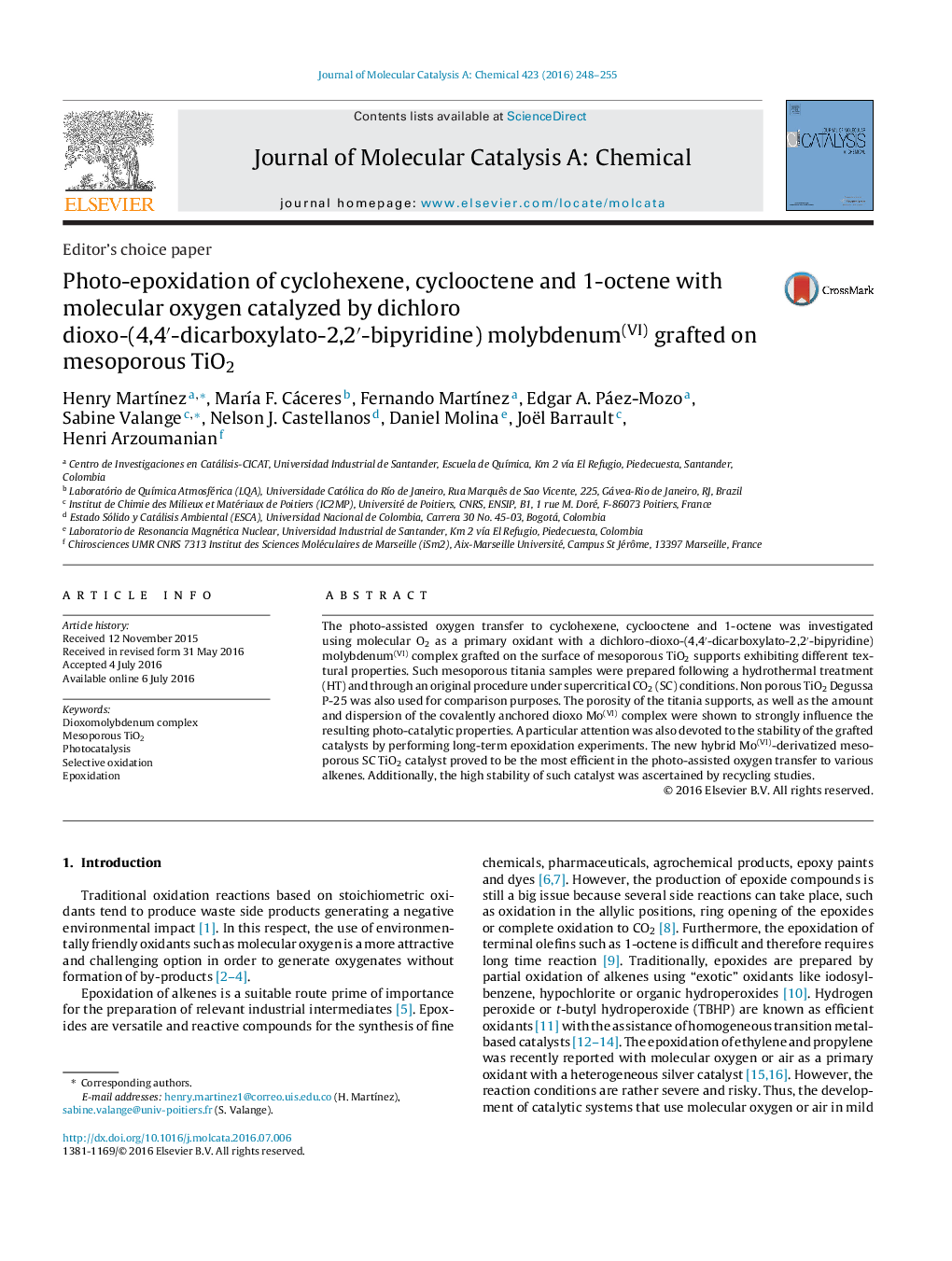| Article ID | Journal | Published Year | Pages | File Type |
|---|---|---|---|---|
| 64546 | Journal of Molecular Catalysis A: Chemical | 2016 | 8 Pages |
•MoO2Cl2Ln complex was covalently anchored to mesoporous TiO2.•MoO2Cl2Ln/TiO2 catalysts allow using O2 as an oxidant under mild conditions.•MoO2Cl2Ln/TiO2 catalysts are active, selective and stable for the photo-epoxidation of alkenes.•MoO2Cl2Ln anchored on mesoporous TiO2 SC-CO2 exhibited the highest activity in the photo-oxidation of the three alkenes.•MoO2Cl2Ln/TiO2 is stable in long term reactions and multiple consecutive reactions.
The photo-assisted oxygen transfer to cyclohexene, cyclooctene and 1-octene was investigated using molecular O2 as a primary oxidant with a dichloro-dioxo-(4,4′-dicarboxylato-2,2′-bipyridine) molybdenum(VI) complex grafted on the surface of mesoporous TiO2 supports exhibiting different textural properties. Such mesoporous titania samples were prepared following a hydrothermal treatment (HT) and through an original procedure under supercritical CO2 (SC) conditions. Non porous TiO2 Degussa P-25 was also used for comparison purposes. The porosity of the titania supports, as well as the amount and dispersion of the covalently anchored dioxo Mo(VI) complex were shown to strongly influence the resulting photo-catalytic properties. A particular attention was also devoted to the stability of the grafted catalysts by performing long-term epoxidation experiments. The new hybrid Mo(VI)-derivatized mesoporous SC TiO2 catalyst proved to be the most efficient in the photo-assisted oxygen transfer to various alkenes. Additionally, the high stability of such catalyst was ascertained by recycling studies.
Graphical abstractFigure optionsDownload full-size imageDownload high-quality image (76 K)Download as PowerPoint slide
